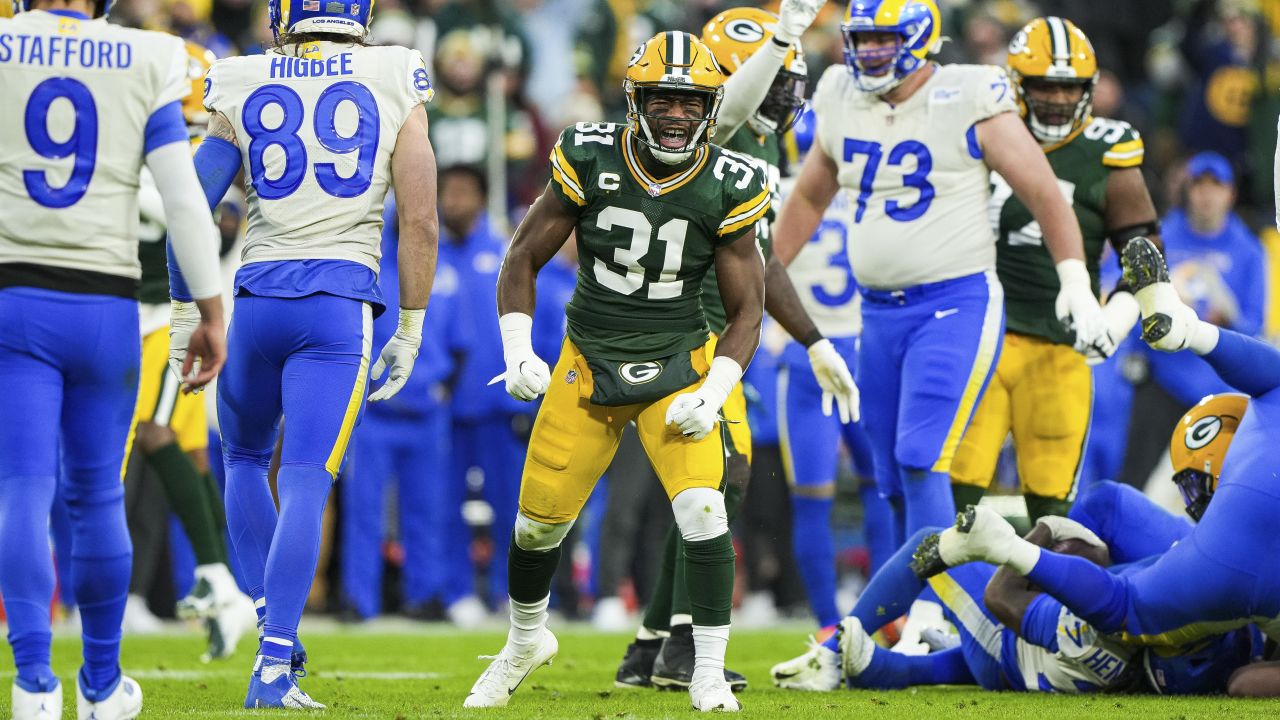
Īn early appearance of the term was in an Associated Press story about the upcoming 1941 Orange Bowl between the Mississippi State Bulldogs and the Georgetown Hoyas. Notre Dame head coach Elmer Layden, who had played in the 1922 Georgia Tech game, afterwards called it a "Hail Mary" play. On November 2, 1935, with 32 seconds left in the so-called " Game of the Century" between Ohio State and Notre Dame, Irish halfback Bill Shakespeare found receiver Wayne Millner for a 19-yard, game-winning touchdown. After the game, Kizer exclaimed to Crowley, "Say, that Hail Mary is the best play we've got." Crowley related this story many times in public speeches beginning in the 1930s.

This time Stuhldreher ran for a touchdown, which sealed the win for Notre Dame. The ritual was repeated before a third and goal play, again at Georgia Tech's 6-yard line, in the fourth quarter. Quarterback Harry Stuhldreher, another of the Horsemen, threw a quick pass over the middle to Paul Castner for the score. According to Crowley, it was one of the team's linemen, Noble Kizer (a Presbyterian), who suggested praying before the first touchdown, which occurred on a fourth and goal play at the Georgia Tech 6-yard line during the second quarter. The term became widespread after an NFL playoff game between the Dallas Cowboys and the Minnesota Vikings on Decem(see Cowboys–Vikings rivalry), when Cowboys quarterback Roger Staubach said about his game-winning touchdown pass to wide receiver Drew Pearson, "I closed my eyes and said a Hail Mary." Ĭrowley often told the story of a game between Notre Dame and Georgia Tech on October 28, 1922, in which the Fighting Irish players said Hail Mary prayers together before scoring each of the touchdowns, before winning the game 13–3. For more than 40 years, use of the term was largely confined to Notre Dame and other Catholic universities. Originally meaning any sort of desperation play, a Hail Mary pass gradually came to denote a long, low-probability pass, typically of the " alley-oop" variety, attempted at the end of a half when a team is too far from the end zone to execute a more conventional play, implying that it would take a miracle for the play to succeed. The expression goes back at least to the 1930s, when it was used publicly by Elmer Layden and Jim Crowley, two former members of the Notre Dame Fighting Irish's Four Horsemen.


Due to the difficulty of a completion with this pass, it makes reference to the Catholic " Hail Mary" prayer for divine help. Roger Staubach, the thrower of the game-winning touchdown pass to wide receiver Drew Pearson during an NFL playoff game between the Dallas Cowboys and the Minnesota Vikings on December 28, 1975Ī Hail Mary pass is a very long forward pass in American football, typically made in desperation, with an exceptionally small chance of achieving a completion.


 0 kommentar(er)
0 kommentar(er)
